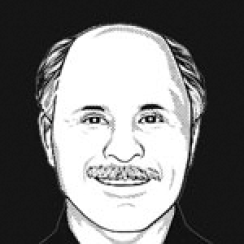A new study of executive compensation should make Occupy Wall Street’s day. The study of CEO pay at S&P 500 companies by corporate governance research firm GMI found that the median “realized” compensation (including total annual compensation, change in pension and non-qualified deferred compensation, value realized on exercise of options, value realized on vesting of other equity, and any payments from a vested retirement benefit plan) surged by 36.5 percent in 2010. Total realized compensation for all CEOs rose 27 percent compared to a 13 percent increase in total annual compensation.
Adding fuel to the ire of the 99 percent set: Four of the 10 highest paid CEOs last year were retired or terminated executives receiving exit packages.
The individual with the highest total realized compensation was John H. Hammergen of McKesson Corporation, who earned more than $145 million, followed by Omnicare’s Joel F. Gemunder, who earned more than $98 million. The tenth highest earner was Wall Street icon Mario Gabelli of Gamco Investors, with about $56.6 billion.
Still, by hedge fund standards, these numbers are chump change. In fact, not one of these CEOs would have come close to making AR’s most recent list of the 25 highest earning hedge fund managers. In 2010, the lowest amount anyone on the list earned was $210 million, by York Capital Management’s Jamie Dinan and Third Point Advisors’ Dan Loeb. That was nearly 50 percent more than the highest earning CEO earned, according to GMI.
And none of these hedge fund earnings include retirement benefits or other such compensation. Instead, they reflected the hedge fund managers’ share of their firm’s total management and performance fees and the calculated gains on their personal capital in the funds. The top earner was John Paulson, who made $4.9 billion, mostly from gains on his own capital.
Except in rare cases, those fund managers generally make the bulk of their gains from appreciation in their investments in the fund. In other words, their earnings are mostly tied to the movement in the financial markets. Rarely do they make the list when their funds are down or up by only a few percentage points.
One recent exception in 2006 was Bridgewater’s Ray Dalio, who qualified for the top 25 despite generating a mere 3.4 percent return net of fees, primarily because he was able to lift his total hedge fund assets to more than $30 billion. So most of his earnings came from a share of his hefty management fees.
Of course, the top CEO earners also earn much of their compensation through investment gains, thanks to their ownership of company stock. GMI reported that base salary rose just slightly more than 2 percent in 2010, on average, only a little better than the 1.8 percent increase in 2009. In the case of McKesson’s Hammergren, for example, $112 million, or almost 80 percent of the number one CEO earner’s total 2010 compensation came from exercising 3.3 million stock options.
Verisk Analytics’ Frank Coyne, who ranked fourth with a little more than $69 million in total realized compensation, received all but $4 million of that by exercising more than 2.5 million options. Vornado Realty Trust’s Michael Fascitelli exercise of options and vesting of restricted stock made him a total of $63 million, or 98 percent of his total realized compensation in 2010.
Not surprisingly, the CEO in the top-10 whose compensation most closely resembles that of hedge fund managers is Gabelli, the legendary investment manager. GMI points out that in the past four years alone, Gabelli earned more than $217 million in what it calls “all other compensation.” This includes fees paid for his services as portfolio manager, incentive management fees, and other variable remuneration, in other words, hedge fund-type of compensation. GMI stresses he does not collect the typical pay elements other CEOs generally receive—salary, stock, and bonuses.
Also not surprisingly, since the beginning of 2000, Gabelli’s stock has nearly tripled. If only the 99 percent could sell more stock.







